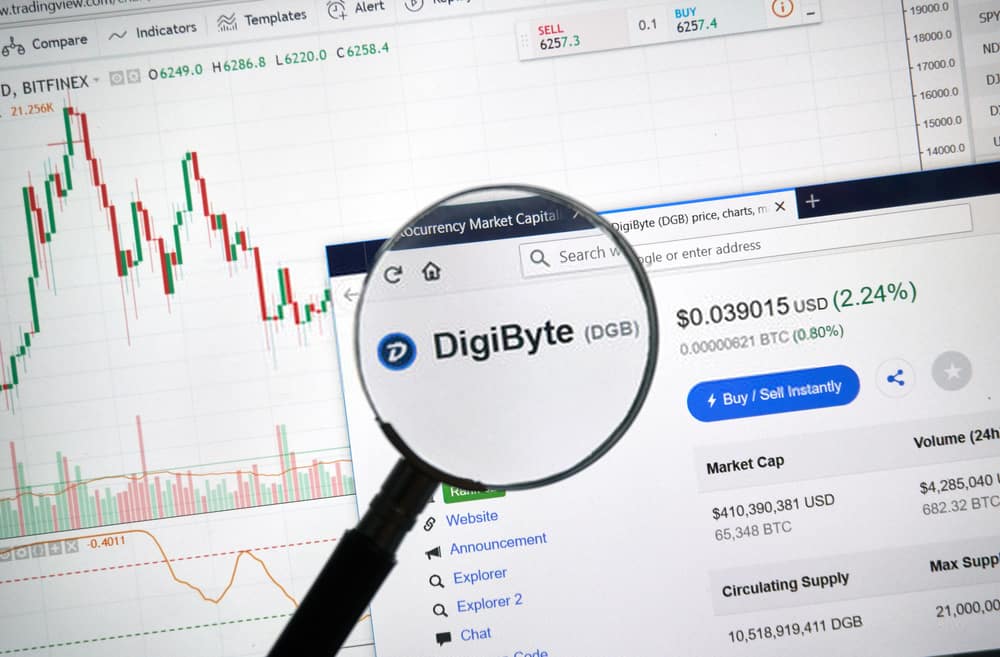Do you know that many consider DigiByte (DGB), a popular cryptocurrency in the U.S, as a fork of Bitcoin? But how much truth is behind the claim? For DGB investors, this is an important question to answer.
This article solves this query by studying the history, technical aspects, and differences between DGB and BTC. We will also find a better place to make your next DigiByte DGB to Bitcoin BTC transaction safely and quickly. Let’s get started!
Defining DigiByte
What Is DigiByte?
DigiByte is a decentralized digital asset released in 2014 with a functional blockchain. A few modifications made it a better cryptocurrency than most other assets.
History of DGB
- Creation: In 2013, DGB was created by developer Jared Tate. The first mining was performed on a genesis block in January 2014 without any ICO for the coin.
- Acceptance: The coin started to gain some acceptance around 2015 as Dutch shopkeepers started using it as a medium of exchange.
Technical Aspects
- Blocks, Mining, and Hashing Algorithms: The genesis block is the first block in the chain. DGB uses a Proof-of-Work mechanism and provides miners with five algorithms. They include SHA-256, Scrypt, Qubit, Skein, and Groestl; no other cryptocurrency offers this.
- Supply: The current circulation of DGB is 11 billion. In 21 years, around 21 billion DGB will be mined.
- Layered Infrastructure: DGB has a three-layer infrastructure. Each layer serves to add better security and user functionality to the coin.
- Block Time: The block time boosts up the transaction speed. On the other hand, the transaction size is limited. Hence, DGB allows for a better throughput. It supports 280 transactions a second.
- Security: DGB has better safety measures than other traditional digital assets. Technologies like MultiShield can protect the blockchain from mining manipulations.
- Developments: The technological achievements of DGB (like the implementation of DigiShield, SegWit, and MultiAlgo mining) took it to another level of success.
Comparison Between the Coins
- Safety: DGB has a decentralized mining focus. Multiple algorithms give a better grip on security. Bitcoin miners, on the other hand, have only the SHA-256 hashing algorithm.
- Conformation Time: In terms of speed, DigiByte rules over Bitcoin. DGB confirms a block in 1.5 minutes. Bitcoin has a slower performance with ten-minute block confirmations.
- Volume: Using the SegWit scaling, DGB can perform from 266 to 1066 transactions per second. On the contrary, Bitcoin can only do three to seven transactions in a second.
- Supply: By 2035, around 21 billion DGB coins will be supplied or mined. So a better supply will create more price stability. However, Bitcoin will only supply 21 million coins in 125 years.
- Flexibility: DGB is very fast to implement changes, including faster upgrades. Bitcoin is slower in making changes.
Is DGB a Fork of Bitcoin?
After studying the two cryptocurrencies we came up with a conclusion that DGB is not a fork of Bitcoin. It is a modification of Bitcoin. The goal was to improve the speed, security, and other features of Bitcoin.
Trade DGB with Godex
To exchange Bitcoin for DGB or other digital assets quickly, you should follow these steps:
- Choose your cryptos.
- Enter the wallet address.
- Deposit your digital asset.
- The exchange is done.
Final Words
In conclusion, DGB is not a fork but a modification of Bitcoin. It has better speed, volume, security, and other technical modifications. If you wish to exchange DGB or BTC, try the fast and secure Godex.io service now.


COMMENTS